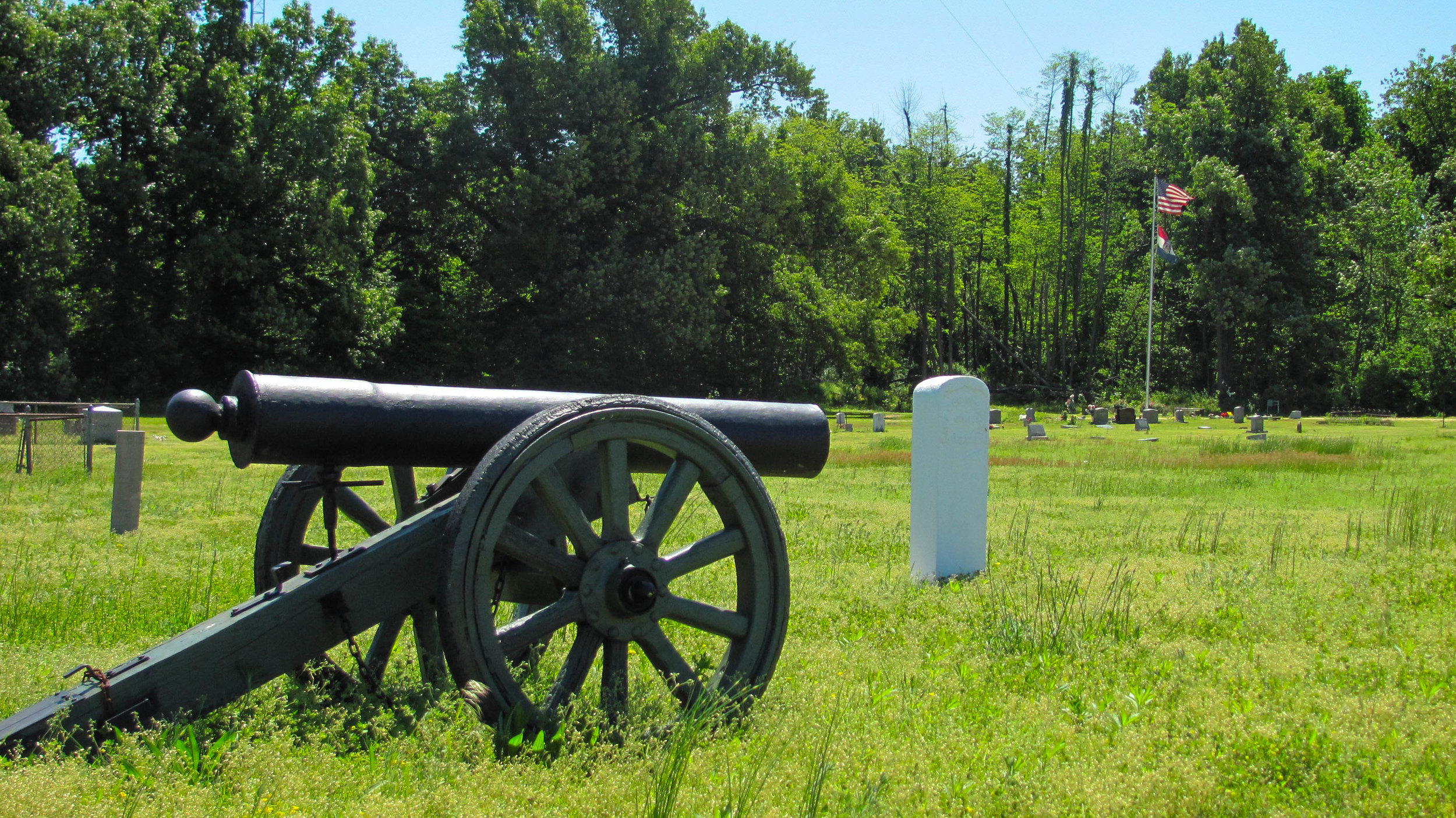Visitors Guide to Attractions
in the Bootheel Region of Missouri
Dunklin, New Madrid, and Pemiscot Counties
The Missouri Bootheel is the southeastern most part of the state and is composed of the counties of Dunklin, New Madrid, and Pemiscot. Explore what the region once was like at the area’s many conservation areas. Learn the history of New Madrid, the great earthquakes of 1812-13, the role the town played in the Civil War, and the town’s history at several museums and historic sites in the town. Get a great view of the Mississippi from New Madrid’s riverfront. Other regional history can be found in museums in the towns of Kennett and Malden.
Bootheel Youth Museum
Malden, Missouri
This museum features 22,000 square feet of hands-on exhibits for kids of all ages. Start with a trip through the BYM Children's Village, where you visit a farm store and milk Daisy the cow; climb through the obstacle course; stand inside a giant bubble; follow in the footsteps of some of America's greatest explorers on the Lewis and Clark Trail. Visitors can experience the museum's many exhibits exploring the worlds of history, math, science, human relations, natural resources and the arts.
Ben Cash Memorial Conservation Area
Kennett, Missouri
The Ben Cash Memorial Conservation Area is located in the St. Francis River floodplain and contains lowland forest, swamp, and open field habitats. The Cash Swamp Natural Area is located on the south end of the area and includes high quality, remnant tupelo-cypress bottomland forest. This conservation area is one of the few vestigial bottomland hardwoods forest in the Bootheel region of Missouri and contains an extremely diversified floral community. The area also offers excellent opportunities for anglers, birders, and those wishing to view wildlife.
Donaldson Point Conservation Area
New Madrid, Missouri
Donaldson Point Conservation Area consists of 5,785 acres and provides about seven miles of river frontage along the Mississippi River. There about 60 acres of ponds that are open to the public. Designated camping areas have picnic tables and fire rings. There are no designated hiking trails but access roads provide good hiking for opportunities to view wildlife. There are good fishing opportunities and seasonal hunting is allowed. The area is good for birding with a good variety of species present throughout the area.
Dunklin County Museum
Kennett, Missouri
The Dunklin County Museum is housed in a building originally built in 1903 for dual purpose use as the Kennett City Hall and a Masonic Lodge. The Museum features historical memorabilia, a nationally recognized collection of miniature machines created by Cecil E. Anthony, as well as a 200 pound stuffed alligator gar.
Hart-Stepp House
New Madrid, Missouri
Operated by the New Madrid Historical Museum, the Hart-Stepp House Art Gallery is housed in the oldest home in New Madrid. The facility opened as an art gallery in 2010 and features the work the area's most talented artists including photographers, painters, crafters, and artists of all ages with exhibits changing monthly.
Higgerson School Historic Site
New Madrid, Missouri
The HIggerson School is a restored one-room school that served the now vanished Higgerson community on the Mississippi River from 1930 until 1968. The Higgerson School is a window into the educational practices that shaped and served rural America and offers its visitors a chance to experience the typical school day of a youngster who would have attended all eight grades in one room, with one teacher. The interior of the school looks as it did in 1948 when the school had 32 students and no electricity.
Hunter-Dawson Home State Historic Site
New Madrid, Missouri
The white antebellum Hunter-Dawson Home State Historic Site is a stately plantation home built for one of New Madrid’s wealthy and influential families. As the Hunter-Dawson State Historic Site, the property has experienced rejuvenation. The state has restored the main house, focusing mostly on its 1860s features. Much of the original furniture was stored within the house, and thus broken pieces were fixed and many of the authentic elements were preserved. The site is open to the public, utilizing the mansion and grounds for interpretive programs, events, and tours.
Little River Conservation Area
Kennett, Missouri
The Little River Conservation Area is located within the Mississippi Delta region and contains the 150-acre Jerry P. Combs Lake. The area also contains reforested bottomland hardwood, marshes, and agricultural fields. Jerry P. Combs Lake has six fishing jetties, one concrete fishing platform, one covered floating fishing dock, and one two lane boat ramp with handicap parking. For birders the most common birds that can be expected to be seen are spring and fall shorebirds, wading birds, waterfowl and raptor migrations.
Malden Historical Museum
Malden, Missouri
The Malden Historical Museum was founded in 1955 by Mary Kochtitzky, who began collecting historical information and articles from area residents. The museum boasts an extensive collection of period garments and accessories from the 1800s and 1900s and its military section contains artifacts from conflicts that local residents served in ranging from World War I to the present. Some of the museum’s most important pieces is the rare Dennis Collection of Egyptian Antiquities.
Morris State Park
Campbell, MO
At 161 acres, Morris State Park is among Missouri’s smallest state parks. But the natural features of the park represent a geologic phenomenon known as Crowley’s Ridge which runs for approximately 150 miles along the Mississippi River floodplain of southeast Missouri into northern Arkansas. The natural landscape of the park contains uplands, middle level forests, and lush hollows that contain over 300 different types of plant species, some which are native in Missouri only to Crowley’s Ridge. Beech Tree Trail, a 2.25 miles loop trail, leads hikers from the top of the ridge down into bottomlands and returns to the ridge top, passing through all of the different natural communities. The trailhead features an accessible walkway with interpretive panels that leads to an overlook with bench seating.
New Madrid & the Civil War
New Madrid, Missouri
New Madrid has a rich history when it comes to the Civil War. In 1861 exiled Governor Claiborne F. Jackson issued a proclamation declaring Missouri a free republic while in New Madrid. The biggest involvement during the Civil War for the community were the battles for New Madrid and Island No. 10 in the Mississippi River in 1862. In addition to exhibits on the Civil War that can be found in the New Madrid Historical Museum, New Madrid and local historians have joined together to produce a brochure featuring a driving tour through the community pointing out the community’s Civil War-related sites.
New Madrid Historical Museum
New Madrid, Missouri
Located along the Mississippi River front in the circa 1886 Kendall Saloon building on Main Street, the New Madrid Historical Museum reflects the history of this river town from the prehistoric through the early 20th century. A variety of exhibits allows visitors to experience culture of this ever-changing river town. The museum features Native American artifacts, exhibits on the great earthquakes of 1811 and 1812, a Civil War Room, and exhibits about late 19th and early 20th century life.
New Madrid Scenic River View
New Madrid, Missouri
Visitors to the riverfront area of New Madrid will find a nicely laid out area featuring an observation deck that offers panoramic views of the Mississippi River. In addition to the deck that juts out into the river is a 1/5 mile walkway that runs along side of the river to Riverside Park. This walkway has several benches along the way as well as historic markers that explain about the New Madrid Earthquakes, the role of the town during Civil War, the Mississippian Native Americans, and how the river shaped community life over the last 200 years.
Nearby Attractions
Crowley's Ridge Parkway in Northeast Arkansas
The counties of Clay, Greene, Craighead, Pointsett, and Cross comprise the upper two thirds of the Crowley's Ridge Parkway National Scenic Byway. Crowley's Ridge rises as much as 200 feet above the vast flatland of the Mississippi River Delta and is characterized by upland hardwood forests, farmland, orchards and a variety of recreational and historical resources. Four state parks lie along the parkway which passes through the St. Francis National Forest. Cultural attractions can be found in Jonesboro, home of Arkansas State University. Many of the regions communities are host to small museums that interprets the area’s history.
Northeast Arkansas along the Great River Road
Northeastern Arkansas along the Mississippi River offers its visitors a variety of attractions. The downtown districts of Blytheville and Osceola have distinctive architecture in their downtown districts. The small communities of Manila and Earle have county museums covering the history and culture of the region. At Sans Souci Landing visitors can get a great up close view of the Mississippi River. Nature lovers will find plenty to do at Big Lake National Wildlife Refuge and Wapanocca National Wildlife Refuge.
Western Tennessee
The Western Tennessee counties of Lake, Obion, Dyer, Lauderdale, and Tipton offers it visitors a variety of historical, natural, and cultural activities. History can be found everywhere in Western Tennessee at such places as Fort Pillow State Historic Park, the Alex Haley Home and Interpretive Center, and many county museums. Nature can be explored at Reelfoot Lake, Tennessee’s largest natural lake, and at Fort Pillow State Historic Park as well as the Tipton County Museum, Veterans Memorial & Nature Center. Unique architecture can be seen at the Tipton and Lauderdale County courthouses and their surrounding downtown districts and Confederate soldier monuments dot the landscape. Theater lovers will delight in the atmosphere of the Ruffin Theater in Covington.
For Travelers Heading Up the River
The Mississippi Meets the Ohio River Region
After the Mississippi River passes St. Louis it begins to change character. When the Mississippi River meets the Ohio River at Cairo, Illinois it is halfway on its journey to the sea. It is here that the brown muddy water of the Mississippi begins to mingle with the clearer water of the Ohio. Without the locks and dams the Mississippi begins to wind and curve so much so that the distance by water from Cape Girardeau to the Gulf of Mexico is twice the distance as a crow flies. The region where the Mississippi River meets the Ohio River is an area of transition in several respects both in terms of the flora and fauna but the culture begins to take on that of the Deep South. The Meeting the Ohio region of the Middle Mississippi River Valley offers it visitors a wide variety of options of activities to do and sites to see. Whether you’re looking for historical or cultural sites or a place to enjoy nature you’ll find it in this part of the country.




























